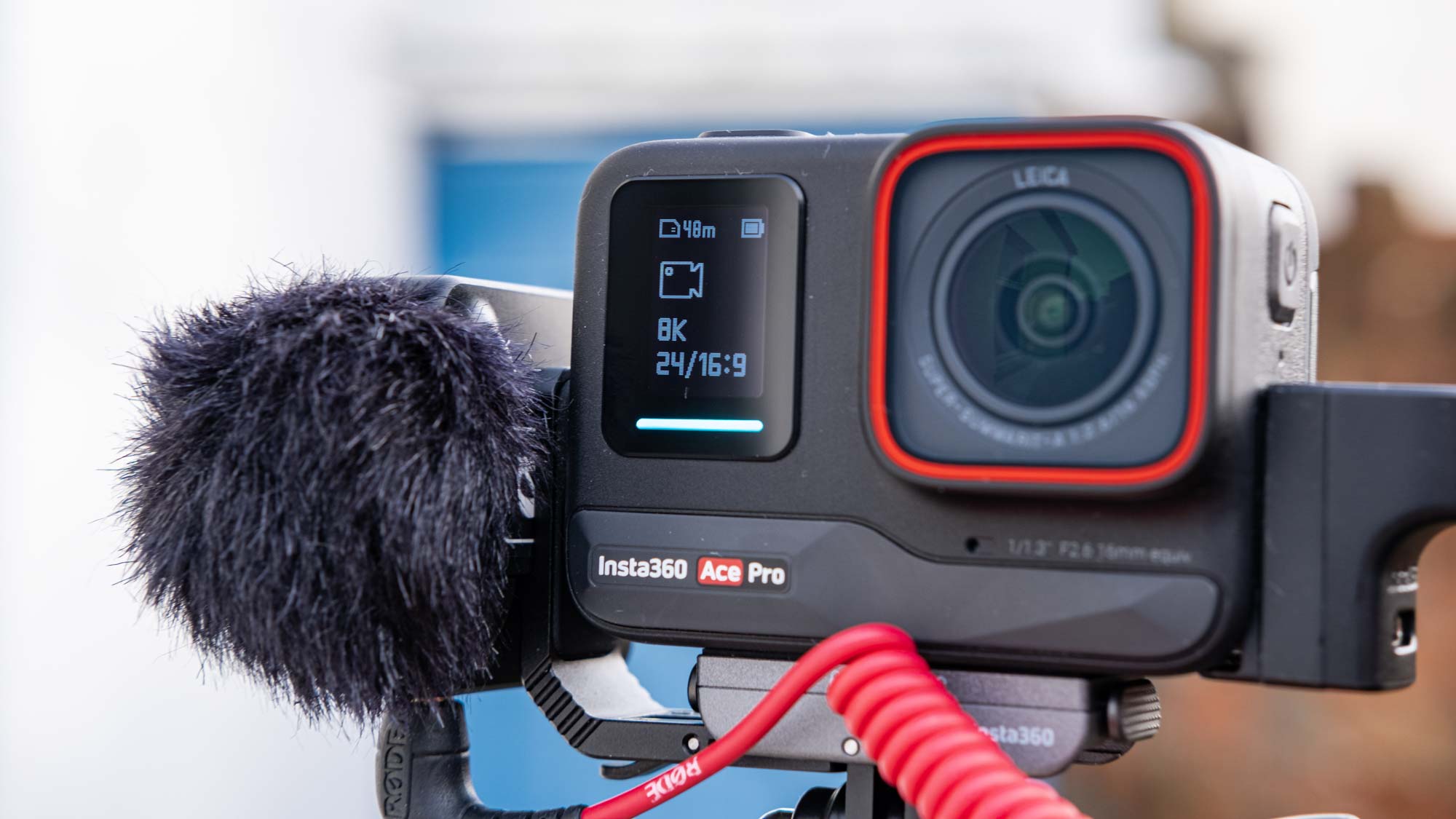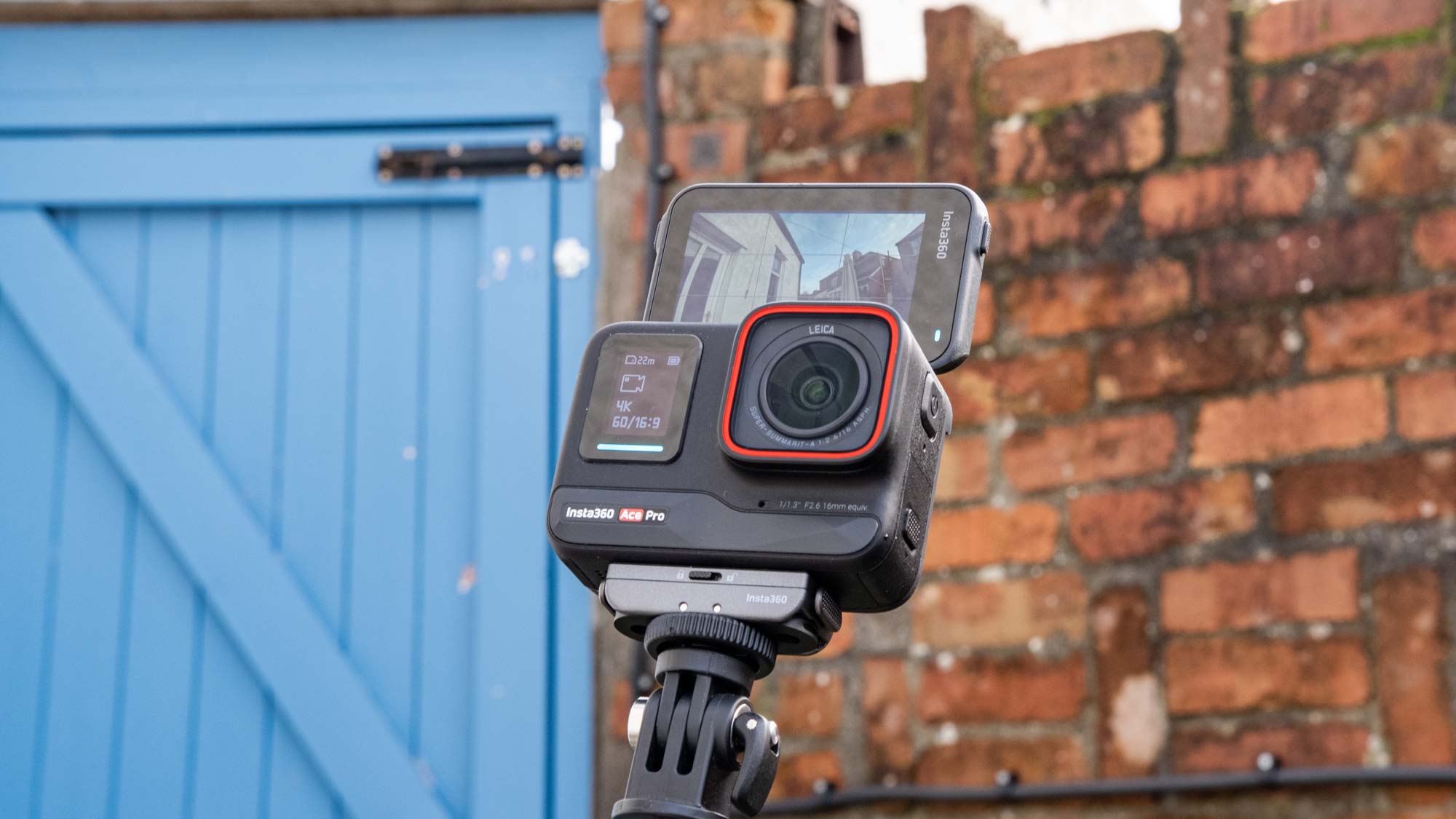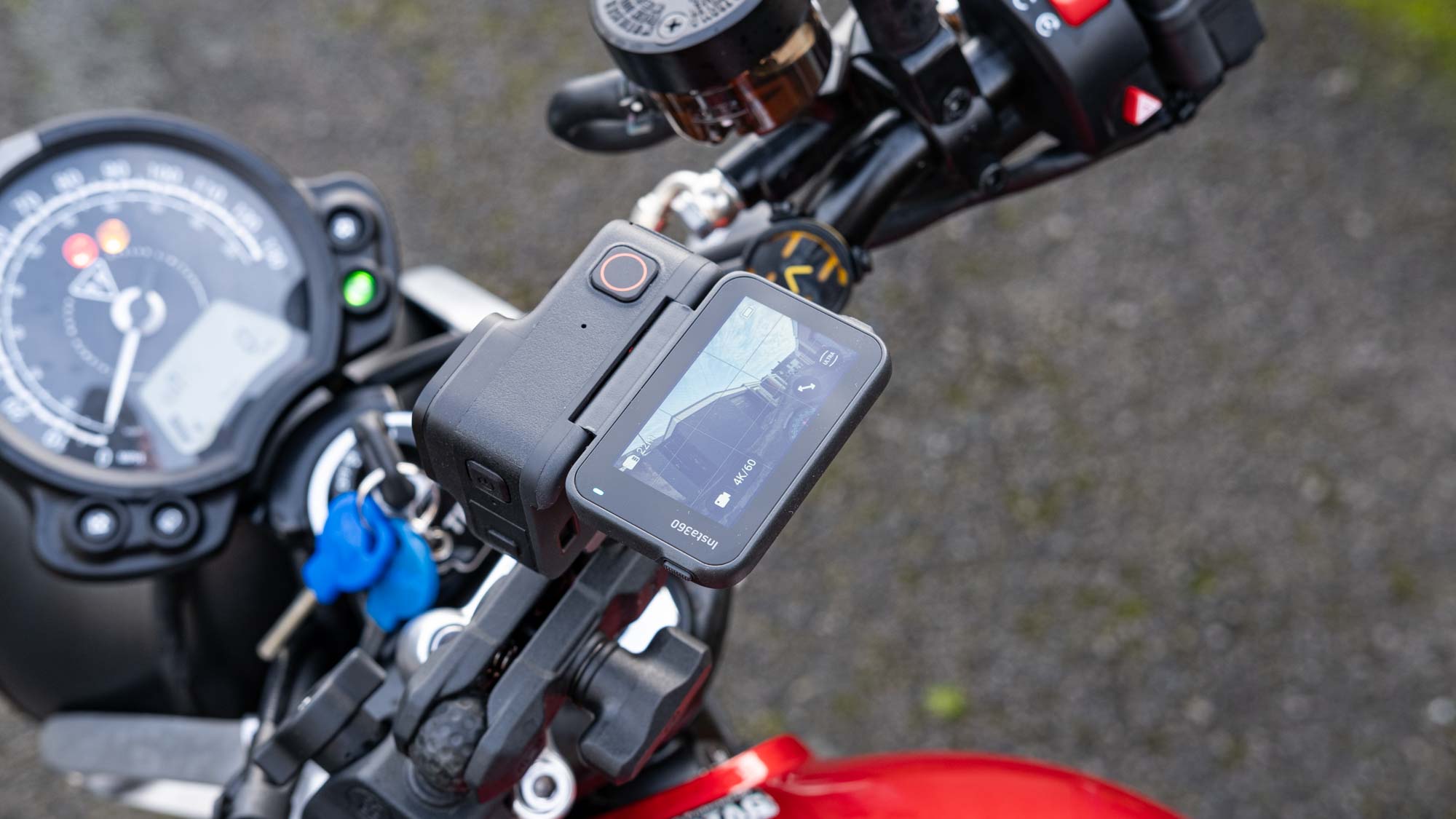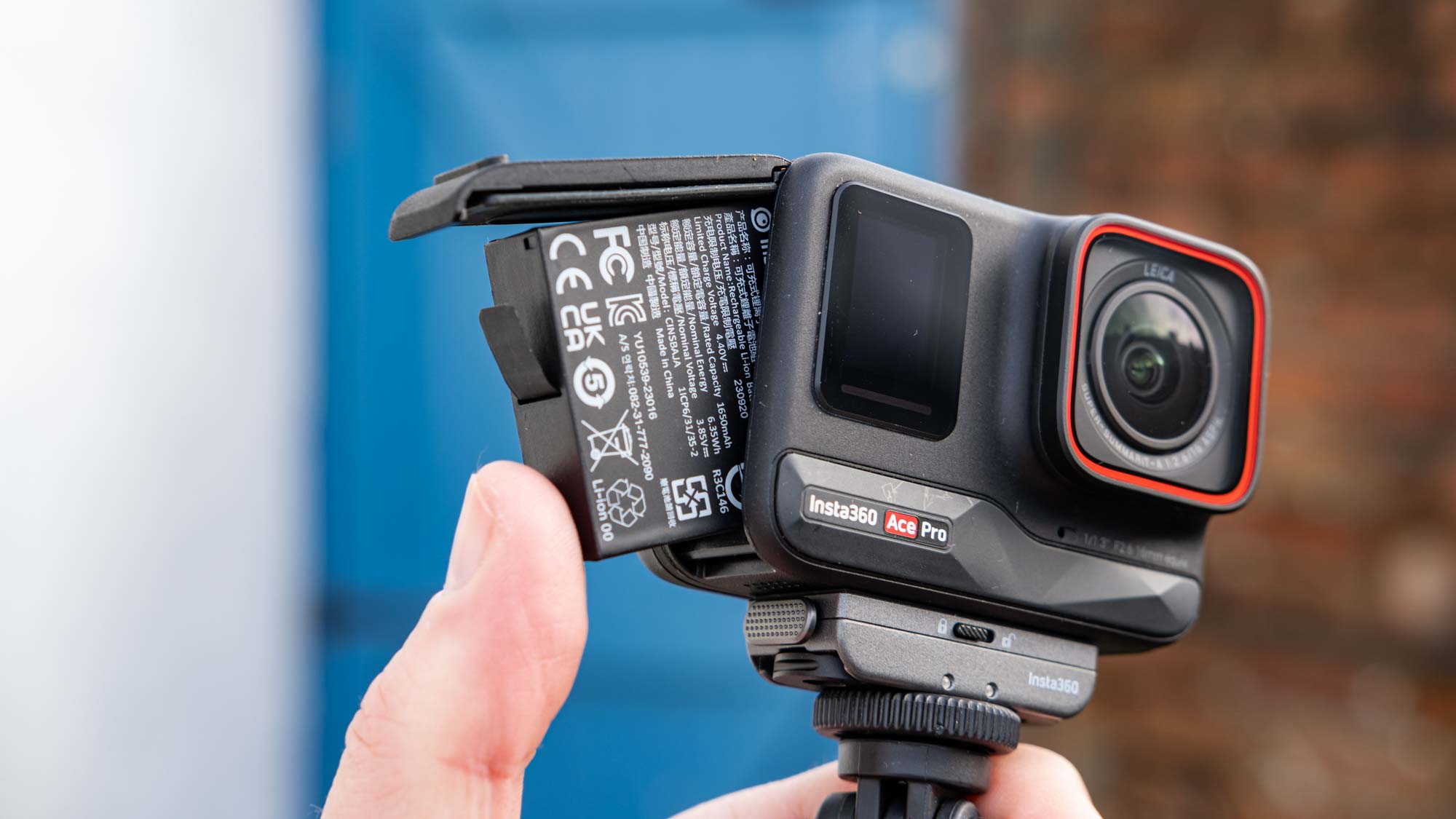Tom's Guide Verdict
The Insta360 Ace Pro is a decent action camera for vlogging and action content, but its Leica optics, internal audio and battery life disappoint. Given its price, you’re better off with a cheaper alternative.
Pros
- +
Good stabilization
- +
Decent face detection/tracking
- +
Awesome app with cool features
- +
Good build quality
- +
Strong thermal performance
Cons
- -
More expensive than rivals
- -
Leica lens is disappointing
- -
Average internal audio performance
- -
Mediocre battery life
Why you can trust Tom's Guide
Starting price: $449
Max video resolution: 8K/24 fps
Slow motion: 4K/120 fps
Sensor: 1/1.3-inch
Rear screen: 2.4-inch flip-up touchscreen
Size: 2.8 x 2 x 1.5 inches
Weight: 6.3 ounces
Water resistance: 33ft (10m)
Battery: 1650 mAh
The Ace Pro is Insta360’s crack at a premium standard action camera to compete with GoPro and DJI. Insta360 already makes epic action-oriented cameras with specific niches. There’s the Insta360 X3, currently the best 360 camera you can buy; and there’s the Insta360 Go 3 if you need something as small and portable as you can get.
However, Insta360 has until now lacked a flagship standard action camera to mix it with the big kids: the GoPro Hero and DJI Osmo Action lines. The Ace Pro is designed to plug that gap, offering users a premium action camera experience with high end features. The Ace Pro is also being released in tandem with the standard Ace, a slightly lower-tier offering intended to attract buyers away from slightly older, cheaper rival models. We’re hoping to test the standard Ace in a separate review, but we’ll point out some of the key differences here.
So, how does the Ace Pro stack up against the best action cameras around? Find out in our Insta360 Ace Pro review.
Insta360 Ace Pro review: Price and availability
The Ace Pro launched in November 2023 and costs $449 / £429 for the standalone camera. This puts the Ace Pro in the same price bracket as the GoPro Hero12 Black ($399) and the DJI Osmo Action 4 ($399), although $50 more expensive than both. For those who want to save a little money, the lower tier Ace costs $379 / £359.
Included as standard with the standalone camera is a battery, a mount with a fork connector, an adhesive mounting plate and a USB-C cable.
The mount used by the Ace Pro is different to mounts used by other Insta360 cameras, so you can’t share mounting plates. However, most accessories use a fork connector or a ⅜-inch thread, so are they interchangeable between cameras. Insta360 offers a wide range of official accessories, giving a great selection of creative angles and ways to shoot.
Insta360 Ace Pro review: Design
The Ace Pro has a few standout design features, but the one Insta360 is proudest of is the lens. It’s a 16mm (full frame equivalent) ultra-wide-angle f/2.6 lens co-developed with legendary German manufacturer Leica (the standard Ace doesn’t get this). We’ll touch on optical performance in greater detail later on.
Get instant access to breaking news, the hottest reviews, great deals and helpful tips.
The lens is shielded by a lens guard, which unfortunately is non-removable — putting any glass in front of a lens will theoretically degrade optical performance. The non-removable nature ensures the 33-foot (10m) water resistance which this camera needs in order to keep up with the Hero12 Black (also 33-foot). Still, both lose out to the Osmo Action 4, which is water resistant to a whopping 59 feet.
Rounding off the key design features are the screens. There’s a front screen which, at first glance, may appear disappointing. It’s only a settings display, akin to the front screen on a much older GoPro Hero8 Black. However, the Ace Pro’s 2.4-inch rear touchscreen flips 180 degrees, effectively resulting in two front screens.
The large flip up screen works really well for selfie-style shooting and will be a big plus for vloggers, as it can be difficult to make out anything on the tiny front screens of the Hero12 Black and Osmo Action 4. It’s bright, with enough room for easy operation and checking framing. Flipped to 90 degrees the screen also allows you to check your footage from above, for example when the camera is mounted on handlebars.
The Ace Pro’s build quality is mostly decent. All construction materials and buttons feel premium and sturdy. Side hatches have good tension and click nicely to tell you they’re closed. The hatch over the connection ports can be removed to make space for a mic adapter, which is useful, although the hatch broke on one of our test models after only a few remove/replace cycles. It’s a large action camera at 2.8 x 2 x 1.5-inches and weighing 6 ounces, which may restrict mounting in certain situations, like helmets.


Connectivity-wise, there’s a micro-SD slot and a USB-C slot for charging and hooking up accessories. Spartan, but par for the course with action cameras.
Insta360 Ace Pro review: Controls
There are only two buttons: a record button, and an on/off button which doubles up as the quick menu button in use. Most device control is done via the touchscreen menus. Insta360’s menu system is a little more convoluted than DJI’s, for instance, which has a shallower learning curve simply by virtue of being more basic. There’s no ‘easy mode’ as you’ll find on the Hero12 Black either, which can be extremely useful for the uninitiated.
That said, Insta360’s menu system is comprehensive and sensibly laid out, so once you know your way around it you’ll have no problem flicking between settings.
Insta360 Ace Pro review: Autofocus performance
Autofocus performance is a mixed bag. Face detection is very good, with the Ace Pro detecting faces in frame and reliably tracking them. As you can see in the selfie footage below, the Ace Pro tracked my face even to the edges of the frame and kept me in focus. It wasn’t as good at detecting smaller/distant faces at wide angles, but it still put on a solid performance, especially when zoomed.
However, without people in frame, I sometimes had difficulty getting the Ace Pro to focus on inanimate objects in the fore- and mid-ground — it prioritized backgrounds, even when that meant focusing on blank walls. This could be down to testing on a pre-production model on pre-production firmware/AF algorithms. There’s no way to manually select focus, though, which would've helped solve the problem.
Insta360 Ace Pro review: Video performance
The Ace Pro’s headline figure is that it can shoot up to 8K/24p video. That’s higher res than both the Hero12 Black (5.3K) and the Osmo Action 4 (4K). Don’t be distracted by how shiny and impressive this huge resolution sounds, though: it’s unlikely to provide much benefit in real world usage, so I wouldn’t buy the camera just because it shoots 8K.
Firstly, 8K is not a very usable resolution by any means — try previewing 20 minutes of 8K footage in Adobe After Effects with anything less than 64 gazillion gigabytes of RAM, and you’ll realize why. Not to mention there are very few 8K monitors in existence (let alone affordable). By the time 8K monitors are widespread enough to make 8K output worth most peoples’ time, effort and computing power, the Ace Pro will be old news.
And while 8K recording may be useful for outputting nicer-looking 4K, there’s still the 24fps frame rate cap to consider. 24fps is not conducive to the whole “action” part of the ‘action camera’ moniker. In reality, 4K/60p is still what will matter most to the majority of consumers, and both the Hero12 Black and Osmo Action 4 shoot that beautifully too, for $50 less.
Annoyingly, there’s no selectable resolution between 4K and 8K. As such, if you do want higher than 4K but don’t want to shoot at 24fps or deal with huge 8K file sizes, you’re out of luck. It’s a strange omission given the standard Ace shoots at 6K/30p.
The Ace Pro’s video quality at 4K is generally very good. In busier or faster paced scenes — as in the motorcycle footage above — images look great in 4K. For action content, the Ace Pro produces as nice footage at 4K/60p as its competitors.
However, I noticed fuzziness in corners at Ultra and Action FoVs, which worsens in Dewarp FoV (as the camera stretches the image to remove barrel distortion). This will be down to optics. It isn’t really noticeable in busy action footage, but it stood out in quieter scenes — vlogging, for example, which Insta360 pitches this camera for.

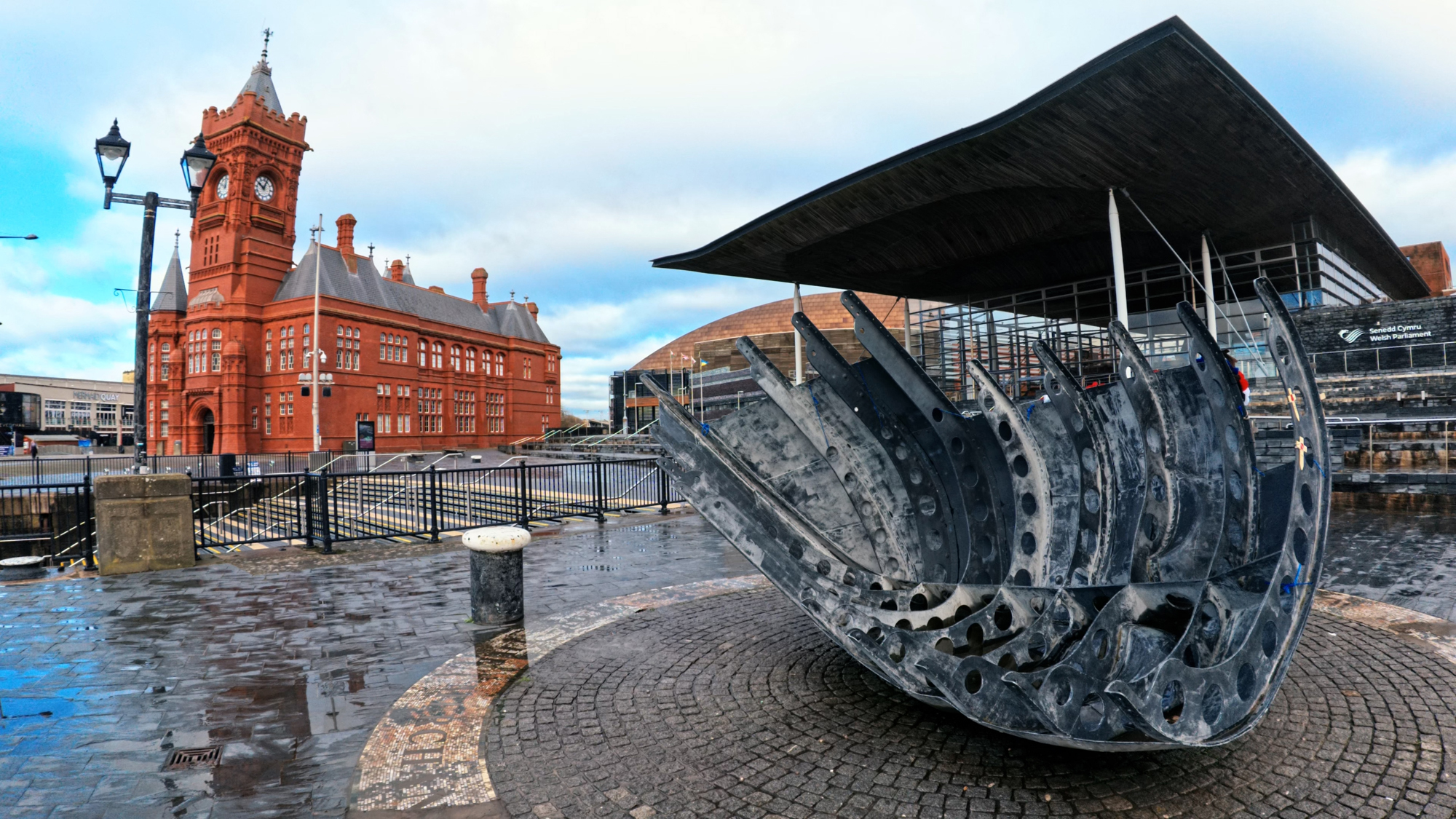

Barrel distortion is normal at ultra-wide focal lengths, but it doesn’t have to equal soft corners — there are plenty of ultra-wide lenses out there that are sharp into the corners even after software optical correction. I’m not saying this is a terrible lens, or that you won’t find similar issues on competitors. But given buyers will be paying a premium for the Leica name — usually a synonym for optical and imaging excellence — I was expecting the lens to be sharper. These issues may either be caused or exacerbated by the lens guard, originally intended to be removable, which Insta360 decided to permanently affix just before production to maintain a 33-foot waterproof rating. The issue will likely fluctuate in severity with changing aperture.
I wouldn’t recommend shooting in zoomed mode, either, unless you have to — as you can see in the video above, footage when digitally zoomed is not very sharp, nor particularly pleasant to look at.
Insta360 is also making a big deal about the Ace Pro’s 1/1.3-inch sensor, which is larger than the Ace’s 1/2-inch sensor, equal to the Osmo Action 4’s and nearly 50% larger than the GoPro Hero12 Black’s. Combined with a 5nm image processing chip, Insta360 says this gives the Ace Pro an edge in low light versus rivals. It is important to remember, though, that a 1/1.3-inch still isn’t that large. In low light, images are grainy, although it’d be unfair to expect anything else from a sensor this size. The camera’s Pure Video low light mode brightens images up, but doesn’t reduce much noise and blows out the odd highlight.
The Ace Pro is set to ‘High’ sharpening out of the box. This is deliberate, as high sharpening looks better on mobile. For viewing or editing on a computer or monitor, drop the sharpening down to ‘Medium’ or ‘Low’ before you record to avoid a watercolor effect.
Insta360’s usual line of color filters are available on the Ace Pro, and they’re great. It’s nice to have a range of creative filters at your fingertips in camera so you can see them applied while shooting. There are 13 color profiles that you can shoot in, whether using the camera or via the app — but you can apply lots more filters in the app after you’ve recorded.
There’s no 10–bit color or Log recording as you’d get with the DJI Osmo Action 4. But there is a flat color mode which should help capture a wider dynamic range versus standard.
To help make this a social-friendly camera, the Ace Pro offers vertical shooting and automatic orientation switching, which is useful for filming social media content.
Insta360 Ace Pro review: Image stabilization
The Ace Pro’s image stabilization performed very well in its default Standard mode. As you can see in the motorcycle test footage below, the stabilization weathers most of the small bumps and shaking of the motorbike, keeping both the motorcycle and the background stable. It performed much better than the DJI Osmo Action 4 on the same test.
I also tested out the High stabilization mode, which works very well for smoothing out handheld panning.
I found that in all stabilization modes, footage occasionally lags and jumps when panning. This could be the result of the camera misaligning frames as it tries to electronically stabilize the footage. This is probably a firmware issue, but slightly disappointing nonetheless.
There’s also a Horizon Lock mode to keep things ultra stable. I didn’t test this out, but it’ll be useful for anyone recording extreme sports involving lots of rotation.
Insta360 Ace Pro review: Audio performance
The Ace Pro’s internal microphone is satisfactory, although audio is generally rather tinny. Wind reduction mode does a fairly good job at reducing wind noise while standing still, but fails to hold up at pace.
The vertical motorcycle footage above (using Wind Reduction) demonstrates the ruinous wind noise. The Ace Pro was mounted next to my bike’s extremely loud (+100dB) exhaust, which was totally drowned out by wind. You may think that’s a given when moving at speed, but the DJI Osmo Action 4 recorded astoundingly clean audio under similar circumstances, with the motorbike’s engine and exhaust clearly audible over extremely reduced wind buffeting.
All that is to say, you’ll want to hook up an external microphone (or buy the Osmo Action 4).
Insta360 Ace Pro review: App
Something I always look forward to when testing Insta360 cameras is using the app, which is feature packed and easy to use. I prefer it to DJI’s Mimo app, which offers limited editing features, and unlike GoPro’s Quick app, all features are free.

Connecting devices and transferring video is quick, simple and reliable, and there are lots of ways to edit and customize your footage, from basic touch ups like trimming, filters and exposure editing, through to the new AI-warp feature.
AI-warp takes 15-second clips and applies AI-generated visual effects and some music — they’re garish and loud, but a fun way to add some color and extra interest to your content.
I particularly liked the Cyberpunk and Sci-Fi warps, but it’d be nice if users could change the music and lengthen the visual warping.
Insta360 Ace Pro review: Battery life and overheating
Battery life on the Ace Pro isn’t great. I achieved just over 80 minutes of footage at 4K/60p. That’s about the same as the Osmo Action 4. It isn't a poor performance, but you’ll definitely want a spare battery. For context, the GoPro Hero11 and Hero 12 Black are rated for 80 minutes at 5.3K/30p.
However, I was highly impressed by the Ace Pro’s thermal performance. My ‘full-to-flat’ battery test runs are done indoors without the benefit of windchill. This environment naturally also tests overheating. The Ace Pro didn’t overheat at all, recording over an hour of footage at 4K/60p in a single file before running out of juice. I ran this test with an Ace Pro using pre-production firmware, meaning 8K was not available. As such, I can’t vouch for thermal performance at 8K.
Insta360 Ace Pro review: Verdict
While it’s a decent action camera in its own right, it’s difficult to recommend the Ace Pro against such veritable competition as the GoPro Hero12 Black and DJI Osmo Action 4. At 4K, the Ace Pro’s video quality is very similar to both its rivals, although there is the disappointing performance of the Leica lens to count against it. 8K/24p is nice to have in theory, but in reality pretty pointless given 8K playback still isn’t really a thing and 24p is too slow for action footage.
As far as audio performance, the Ace Pro’s internal mics aren’t bad, but they don’t hold a jot against the DJI, so you’ll want an external microphone for outdoor and fast-paced recording. That’s an extra expenditure to consider.
There are some serious selling points. Insta360’s app is brilliant as always, and offers more than the competition. Stabilization is good enough to rival GoPro and to best DJI. What’s more, there’s a reason GoPro sells an additional flip up rear screen for the Hero12 Black: it’s because the tiny front screen is too small for vlogging at arm’s length. This makes the Ace Pro a better choice for vloggers.
The thing is, the Ace Pro is undermined by the standard Ace, which we’re yet to test but ostensibly seems a more compelling purchase. While the Ace has a smaller sensor, it nevertheless offers many of the benefits of the Ace Pro for less money. It can shoot in 4K/60p. It has a flip up screen for vlogging. It uses the same app, has the same stabilization, and isn’t demanding a premium for a resolution you likely won’t use, nor a lens that fails to deliver on its pedigree. On paper at least, why wouldn’t you just buy the Ace?

Peter is a Senior Editor at Tom's Guide, heading up the site's Reviews team and Cameras section. As a writer, he covers topics including tech, photography, gaming, hardware, motoring and food & drink. Outside of work, he's an avid photographer, specialising in architectural and portrait photography. When he's not snapping away on his beloved Fujifilm camera, he can usually be found telling everyone about his greyhounds, riding his motorcycle, squeezing as many FPS as possible out of PC games, and perfecting his espresso shots.

